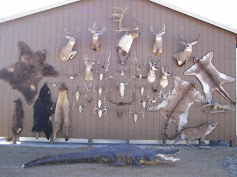Poaching in North America: Threats to Wildlife and Ecosystems
Poaching, the illegal capture of wild animals, remains a significant threat to North America's diverse wildlife and ecosystems. From majestic big cats to vulnerable reptiles, a wide range of species fall prey to poachers motivated by profit, cultural beliefs or the thrill of the chase. This article delves into the disturbing reality of poaching in North America, shedding light on the animals most affected, the motivations behind this illegal activity, and the far-reaching consequences for both wildlife and the environment.
Animals that are hunted:
Big cats: Mountain lions, bobcats and even the iconic American black bear are targeted for their fur, trophies or perceived threat to livestock.
Ungulates: Deer, elk, and moose are hunted for their meat, antlers, or status symbols.
Reptiles. Turtles, snakes, and alligators are poached for meat, skin, or the illegal pet trade.
Birds: Birds of prey such as eagles and hawks are often killed due to conflicts with hunting or ranching interests.
Consequences of poaching:
Population decline and species extinction: Poaching can cause significant population declines, pushing some species closer to extinction.
Ecosystem disruption: The loss of key species can disrupt the delicate ecological balance, affecting food chains and the overall health of the ecosystem.
Illegal wildlife trade: Poaching fuels the illegal wildlife trade, a multi-billion dollar industry that further threatens wildlife populations.
Reasons for poaching:
Financial benefit: The high market value of animal parts such as ivory, fur, and horns encourages commercial poaching.
Subsistence needs: In some communities, poaching may occur to meet basic food or livelihood needs.
Cultural beliefs. Traditional beliefs or customs may lead to the poaching of certain species for medicinal or ceremonial purposes.
Fight against poaching:
Strengthening law enforcement: Increased patrols, tougher penalties and better cross-border cooperation are critical to deter poachers.
Community involvement: Educating local communities about the value of wildlife and involving them in conservation efforts can reduce poaching.
Addressing root causes: Addressing poverty, food insecurity and cultural misconceptions can help reduce the drivers of poaching.
Poaching is a complex problem that requires multifaceted solutions. By raising awareness, supporting conservation efforts, and advocating for stronger measures, we can help protect North America's precious wildlife and ecosystems for future generations.




Comments
Post a Comment